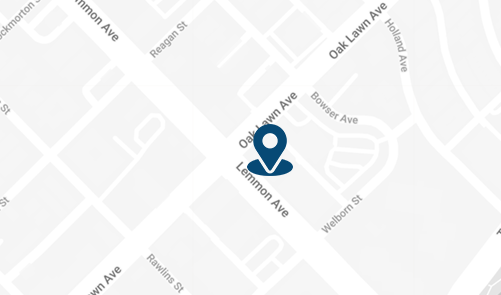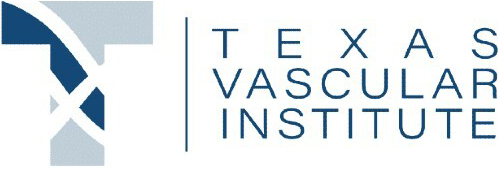By: Dr. Dev Batra | 01.30.23
Your veins may actually be the reason that you experience frequent night cramps, restless leg activity, and soreness in your legs. Our patients are often surprised by the symptoms that their veins are causing. Unfortunately, the cosmetic manifestations of vein problems tend to bias our thinking away from the medically significant (and sometimes quite severe) symptoms of venous reflux.
I’ve dealt with my fair share of medical peers and even patients that stigmatize vein treatment as a cosmetic solution only, not knowing that their other symptoms are potentially a consequence of venous reflux, or that treatment today could help them avoid more advanced symptoms down the road. To help correct some of this thinking, we’ve provided a detailed review of the non-visual symptoms of venous reflux.

Vein Problems Do Not Always Have a Visual Cue
The underlying cause of most vein problems is a phenomenon known as “venous reflux.” Venous reflux refers to the condition in which blood in a vein or a group of veins flows backwards (away from the heart), causing blood to accumulate in the veins. Medical professionals will often refer to the symptoms of venous reflux as “chronic venous insufficiency” (CVI) or “chronic venous disease” to describe the medically significant problems that result from long-term insufficient flow of blood through the veins.¹
Venous reflux can cause a variety of symptoms, leading to very diverse presentation across individuals with vein problems. Some only have visual signs and no further symptoms, while others unknowingly feel the consequences of their vein problems but have no visible vein anomalies.² In many instances, patients will present with both visual signs and non-visual symptoms.
Cramping
Painful cramping in the calf, especially at night, can be a telling symptom of underlying venous reflux. Our current understanding of the disease process suggests that venous reflux limits the supply of oxygen and other important nutrition to muscles, leading to an energy shortage that can cause the calf muscle to periodically ‘lock up’.³
Restless Leg Symptoms
Individuals with venous reflux frequently describe an uncontrollable urge to move the affected leg caused by throbbing, tingling, or another uncomfortable sensation. These symptoms are similar to what are commonly referred to as “Restless Leg Symptoms.” Restless leg symptoms are typically most troublesome at night and, in severe cases, can interrupt sleep. Even when legs appear normal, an ultrasound exam may reveal that restless leg symptoms are linked to underlying venous reflux; in which case, vein treatment may alleviate restless leg symptoms.⁴

Leg Pain or Soreness
It is common for venous reflux to be accompanied by general pain or soreness in the lower half of the leg even in the absence of visual vein problems. Leg pain caused by venous reflux may only manifest after walking or running a short distance, limiting physical activity. This pain pattern is sometimes referred to as ‘claudication’ and often resembles a cramping sensation.
Leg Fatigue or Heaviness
As reflux worsens, the affected area may begin to swell as fluid ‘leaks’ from the refluxing veins. Extra fluid on the legs can cause them to feel heavy while walking and tire quickly during physical activity.
Tingling or Numbness
Depending on the severity of reflux, individuals may experience sensations of tingling or numbness similar to the feeling of ‘pins and needles’ or their leg ‘falling sleep.’ These sensations may be clinically described as ‘paresthesia,’ and are typically attributed to nerve changes caused by reflux.
Throbbing or Aching
Some of our patients have described a persistent, unexplained throbbing or aching in their legs that accompanies an inconspicuous vein issue. While these sensations are not always related to venous reflux, a quick ultrasound exam may lead to the discovery of an underlying vein problem.

Itching or Burning
Venous reflux can cause changes to the skin in the affected area. During the early stages of venous insufficiency, subtle skin, and nerve changes can cause unexplained dryness, itchiness, or burning. These symptoms can persist as reflux worsens and skin changes become more overt.
Symptom Relief
The spectrum of symptoms caused by venous reflux can baffle general practitioners and other medical providers that aren’t familiar with vein pathology. Too often, vein problems aren’t considered as a cause of cramping, restless legs, or leg pain without the obvious visual signs of bulging veins or skin color changes. If you’re experiencing any of these symptoms and aren’t sure why, you may want to consider seeing a vein specialist. Vein disease is very treatable, but if left unchecked, vein symptoms can worsen over time.
About The Author
Dr. Dev Batra, M.D. is a vein specialist and founding partner of Texas Vascular Institute. Holding board certifications in Radiology and Vascular & Interventional Radiology, he is well-versed in vein issues and has been voted one of D-Magazine’s best doctors in Dallas for three years running.
This blog post was written with research and editorial assistance from OnChart™.
References
[1] Jacobs, B. N., Andraska, E. A., Obi, A. T., & Wakefield, T. W. (2017). Pathophysiology of varicose veins. Journal of Vascular Surgery: Venous and Lymphatic Disorders, 5(3), 460–467.
[2] Michael H. Criqui, Maritess Jamosmos, Arnost Fronek, Julie O. Denenberg, R., & D. Langer, John Bergan, and B. A. G. (2003). Chronic Venous Disease in an Ethnically Diverse Population The San Diego Population Study. American Journal of Epidemiology, 158(5), 448-456. PMC 2015 Jan 6.
[3] Allen, R. E., & Kirby, K. A. (2012). Nocturnal leg cramps. American Family Physician, 86(4), 350–355.
[4] Hayes, C. A., Kingsley, J. R., Hamby, K. R., & Carlow, J. (2008). The effect of endovenous laser ablation on restless legs syndrome. Phlebology, 23(3), 112–117.
Medical Disclaimer
The Materials available in the Texas Vascular Institute blog (“The Vein Blog”) are for informational and educational purposes only and are not a substitute for the professional judgment of a healthcare professional in diagnosing and treating patients.
Read more blogs
Varicose Veins in Hurst: Expert Care at Your Doorstep
At Texas Vascular Institute (TVI), we empathize with the discomfort and worry caused by varicose veins. That's why we're here in Hurst, providing cutting-edge treatments that are customized to address your unique needs. With our team of experts wielding extensive knowledge and experience, we promise to provide the utmost care in a warm and compassionate atmosphere. Let us help you find relief and regain your confidence!
Varicose Veins in Dallas: Quality Care You Can Trust
Our exceptional team of vascular specialists are true leaders in their field, armed with years of invaluable experience. Harnessing the power of cutting-edge advancements in vein treatment, they've transformed the lives of numerous patients, liberating them from the pain and unsightly burden of varicose veins. When you choose TVI, you're opting for unparalleled care and unwavering commitment to your varicose vein needs in Dallas.
How to Get Rid of Varicose Veins in Hurst?
The causes and risk factors of varicose veins vary from genetics to age, pregnancy, obesity, and prolonged standing or sitting, among other factors. Some typical signs and possible issues include discomfort, inflammation, irritation, hemorrhage, dermatological alterations, sores, and thrombosis. You may want to seek medical attention if you experience any of the following symptoms or complications.
WHAT OUR PATIENTS
have to say
Texas Vascular Institute always appreciates feedback from our valued patients. To date, we’re thrilled to have collected 378 reviews with an average rating of 5 out of 5 stars. Please read what others are saying about Texas Vascular Institute below, and as always, we would love to collect your feedback.
Leave a Review
Amazing Practice
I'm very particular with my Healthcare and tend to be cautious with referrals to specialists. This office is amazing from the first point of contact. Their staff are friendly, professional and highly knowledgeable. Then the Dr is just as amazing as his staff, absolutely brilliant. Office manager Jessica has this office running like a well oiled machine and does so with a smile, an air of confidence, kindness and professionalism. Love this practice!!
- Richard G.

Beyond Thankful
Dr Batra and his staff are amazing! We are so grateful to have found him. Everyone is so kind and so caring and Dr Batra explains everything so well and does procedures with excellence. Beyond thankful to be under their care!!!
- Bitsy P.

Gold Standard
This is a gold standard for how a medical practice should be run. I was promptly seen at my scheduled time, my ultrasound was thorough and I received plenty of attention and care from the staff and Dr.Batra.
- Weronika L.
INSURANCE
We accept most major insurance plans. Please contact the medical office for all insurance related questions.









3500 Oak Lawn Ave, #760
Dallas, TX 75219
For Appointments: 972-798-4710
General Inquiries: 972-646-8346

809 West Harwood Rd, Suite 101,
Hurst, TX 76054
For Appointments: 972-798-4710
General Inquiries: 972-646-8346

